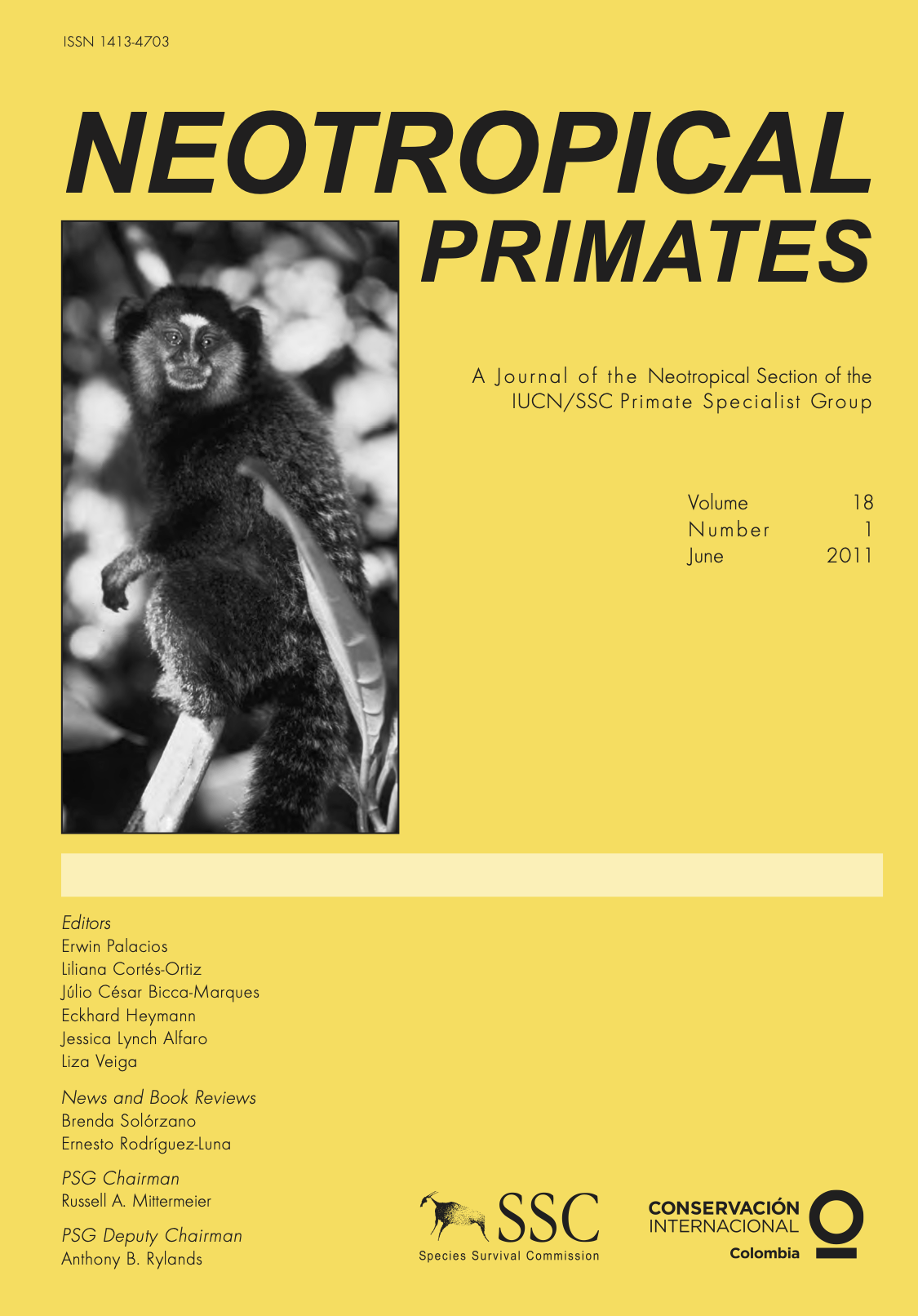Densidade e tamanho populacional de primatas em uma área de terra firme na Amazônia Central
DOI:
https://doi.org/10.1896/044.018.0102Keywords:
Ducke reserve, Amazon forest, linear transect, ManausAbstract
Brazil contains 1/3 of the world’s remaining tropical forests and is recognized as one of the world’s most important storehouses of biodiversity. With regard to primate species richness, it is especially prominent. There are 133 species and subspecies in Brazil – of these 80 occur in the Brazilian Amazon and 11 are in danger of extinction. In spite of these impressive numbers, there is little ecological or population data available for many of these species, especially those that occur in the Amazon. To address this lack, the objectives of this study were to: 1) record occurring primate species; 2) estimate their population densities; and 3) characterize their distributions in the Adolpho Ducke Forest Reserve. This reserve, situated on north of Manaus in the state of Amazonas, Brazil, contains 10,000 hectares of primary forest. The data were collected using linear transects, covering the entire system of trails within the reserve. In a total of 720 km of trails walked, 58 sightings were registered of Saguinus bicolor, 29 of Cebus apella, 20 of Alouatta seniculus, 13 of Pithecia pithecia and 10 of Chiropotes sagulatus. Sightings occurred in all types of environments (plateau, slope, and lowland). S. bicolor had the greatest density (1.00 group/km2), followed by C. apella (0.67), A. seniculus (0.66), P. pithecia (0.64) and C. sagulatus (0.30). The resulting estimate of groups present in the total reserve area, not considering possible gaps, natural habitat variation, or resource availability, is 100 groups of S. bicolor, 67 of C. apella, 66 of A. seniculus, 64 of P. pithecia and 30 of C. sagulatus. These results demonstrate the importance of the Adolpho Ducke Forest Reserve for the maintenance of biodiversity and emphasize the need for targeted conservation policies to contain anthropogenic disturbances in the region.

Downloads
Published
Issue
Section
License

This work is licensed under a Creative Commons Attribution-NonCommercial-ShareAlike 4.0 International License.


